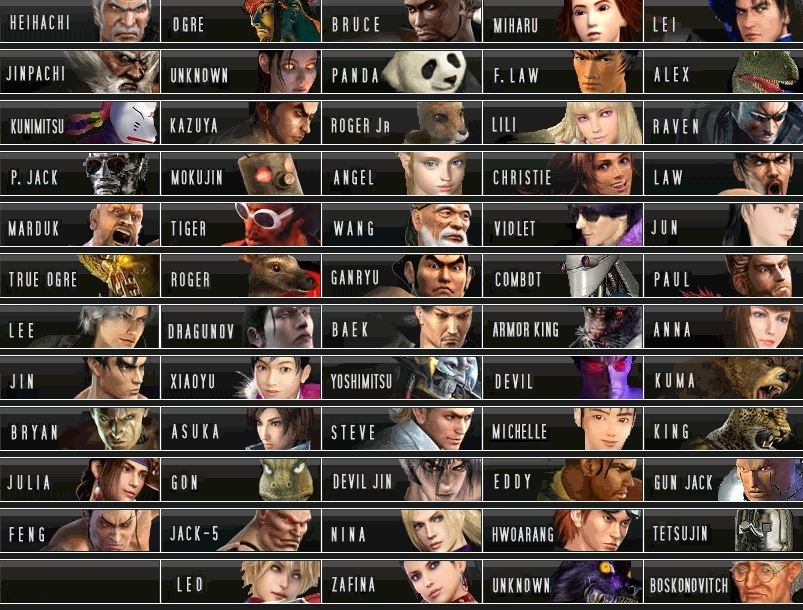
#Tekken 3 characters models series#
King has been my main in the series since day one, but his slower attacks left him wide open for attack here. Slower characters can in theory take out foes faster by doing more damage with each shot, but they take longer to dish that damage out and that leaves the player open to attack from all sides. Tekken Force actually wound up being a diverse brawler in terms of offense since characters had their movesets available and each character had their own pros and cons for the style. The beat-em-up was on a downward trend after the early ’90s, but having it represented as a secondary mode here gave it prominence again and reminded players of the fun they could have with the genre.
#Tekken 3 characters models ps2#
Tekken Force became something of a standard feature for console incarnations of the series for a while and even led Namco to create a Nina Williams-starring brawler on the PS2 a few years later in the form of Death by Degrees.

Smart cuts were made because the feeling of each environment was retained while also working within the limits of the hardware. Work was done to cut back on backgrounds by having a single matte painting-style backdrop wrap around the stage instead of the arcade’s more organic-looking environments as well. Animation is silky-smooth and while Namco did shrink down character models, they kept animation counts high. The core gameplay is still as fast as ever, but far more refined and looks fantastic on the PS1. Armor King is slower, while King is a lot faster and uses more modern, flashier attacks to win. King and Armor King are great examples and in theory they should be similar and yet they have different movesets and a different feel due to their speed. It also had the greatest roster size on the market and each character felt different outside of palette swaps. The mainline Tekken 3 experience was the most polished fighter Namco offered to this point and had smoother controls than either prior entry. Tekken 3 on the PS1 marked the debut of Tekken Force mode - the side-scrolling beat-em-up mode alongside the debut of Tekken Ball, a volleyball mode that stood out in its time and still does today. The development team went with smart cutbacks visually in order to ensure that the game was beyond arcade-complete in terms of features. Given that it was working off of native arcade hardware that was above what the console could do, Namco had to fine-tune the port and in doing so, created something that remains a benchmark for properly scaling a game to fit the hardware over twnety years later. Namco went in the complete opposite direction whenever possible by offering up a ton of extras over time, and Tekken 3 really got that ball rolling with a landmark PS1 release. The franchises went back and forth with Sega offering up impressive home ports of VF 2 on the Saturn and VF 3 on the Dreamcast, but largely doing arcade-based ports without a lot extra content. Its four-limb control setup was unlike anything on the market and made it easy to pick up and play, and its graphics were top-notch until Virtua Fighter 2 hit and raised the bar.

The early days of the franchise were interesting because what started as a series from Namco meant to combat Sega’s Virtua Fighter wound up standing out due to a few things.

Tekken 4 was a divisive, but fantastic entry in the series. You’ll see both good and bad souls unearthed every month as we search through the more… forgotten…parts of history. Inside, we’ll be digging up games that have long been without a pulse. Watch your step, for you’ve just entered the Graveyard.


 0 kommentar(er)
0 kommentar(er)
